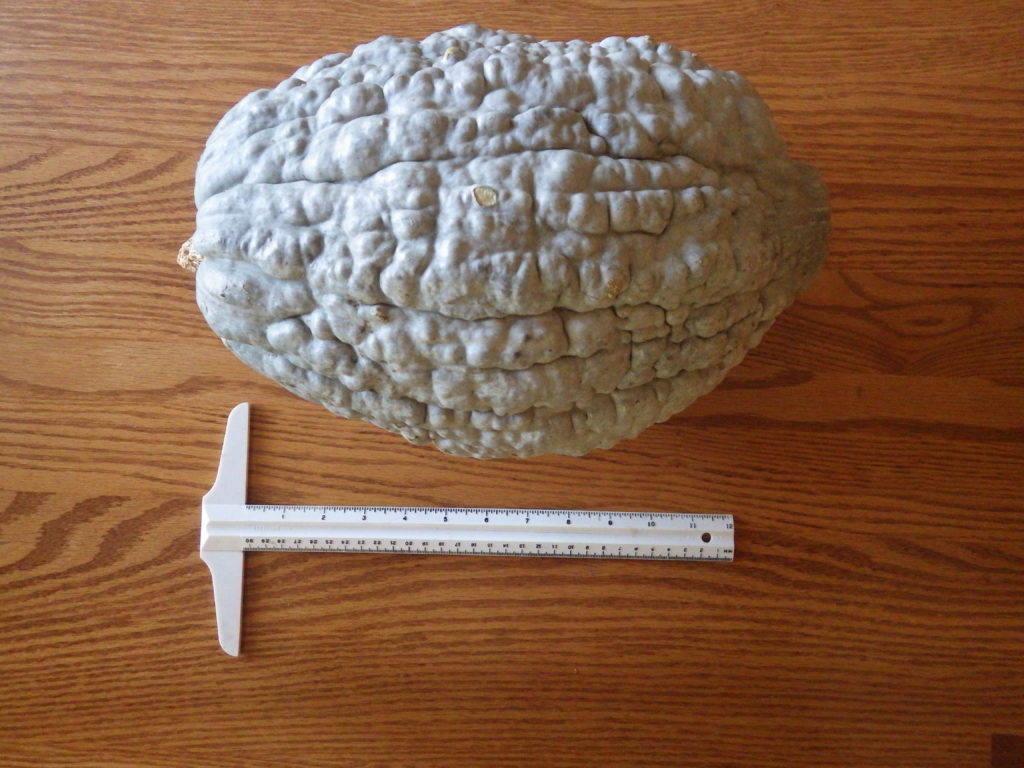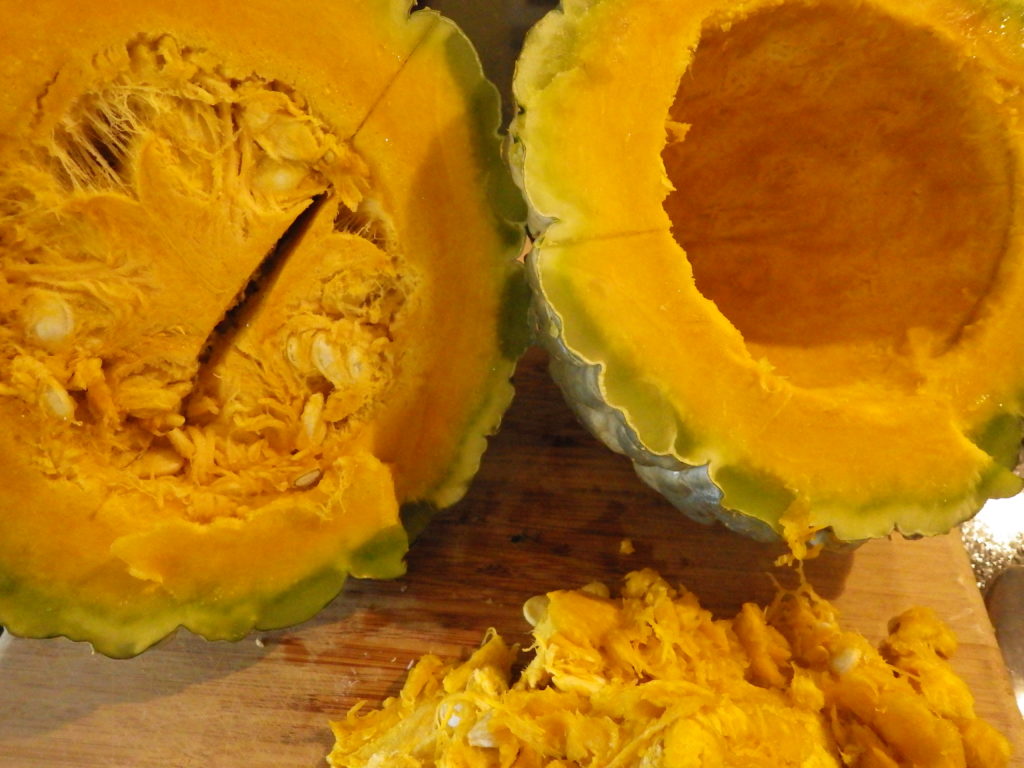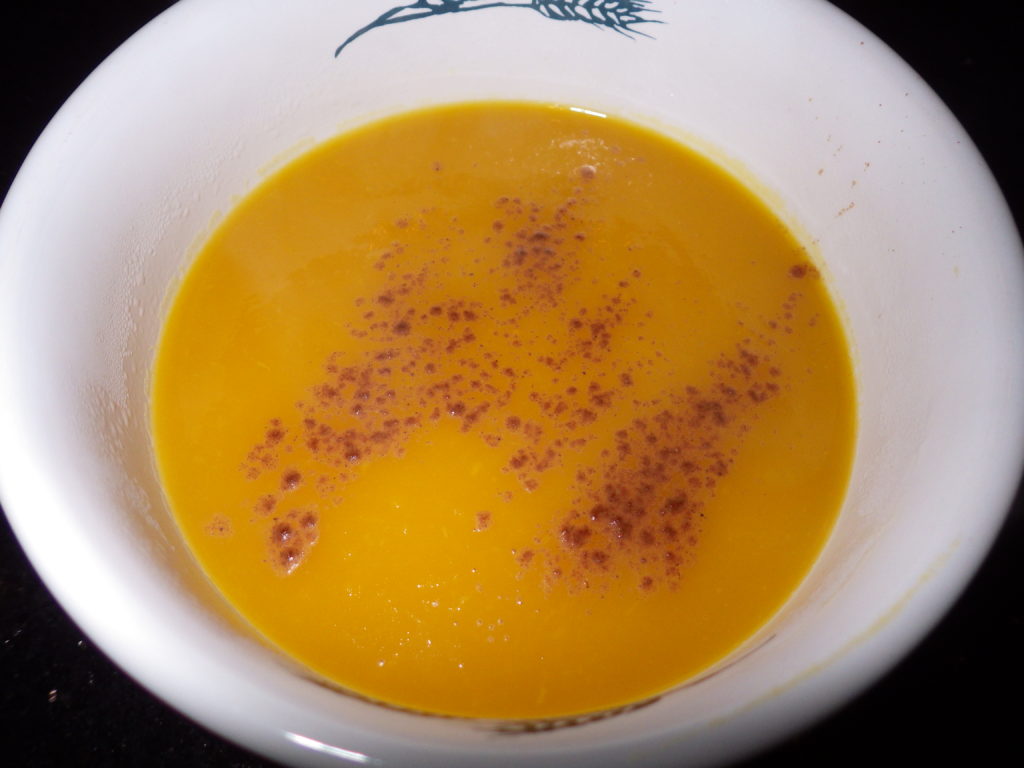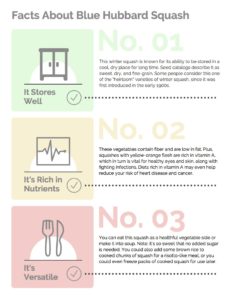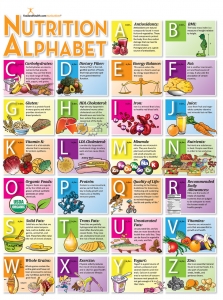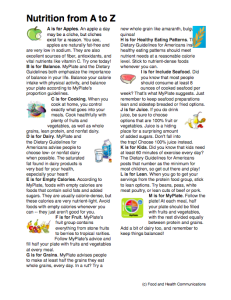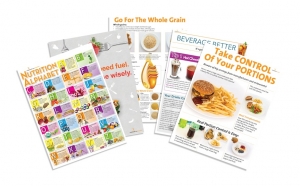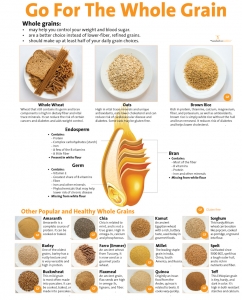Quick Quiz: What food is blue/grey and bumpy on the outside, bright orange in the middle, and full of vitamin A?
On a recent visit to a local farmers’ market, I found this item in an outside bin with lots of others of various sizes. It was on sale for half its regular price and it seemed that there weren’t many people buying whatever it was.
I carried one around while I was shopping and several people asked me what it was. Others asked if it was blue on the inside and what was I planning on doing with it.
Quiz Answer: This mystery veggie is a Blue Hubbard Squash!
It turned out that my mystery gourd was a Blue Hubbard Squash. However, when I asked the clerk what people do with it and how to cook it, she said she didn’t know.
Always inquisitive about food, I bought it.
(Fortunately it was sold by the piece and not by the pound because the one I picked up weighed 13 pounds)!
When I got home, the squash remained a curiosity. My husband had fun asking about the “monster Smurf gourd,” while visiting neighbors were quick to google it. This veggie was definitely a conversation starter!
So now let’s talk about the Blue Hubbard Squash. This winter squash is known for its ability to be stored in a cool, dry place for long time. Seed catalogs describe it as sweet, dry, and fine-grain. Some people consider this one of the “heirloom” varieties of winter squash, since it was first introduced in the early 1900s.
I admit that the hardest part was cutting into the hard outer shell of the squash. I “cheated” a little by washing it completely on the outside and putting it whole in the microwave for 10 minutes. This softened the outside enough to allow me to cut into it. After cutting it in half and cleaning out the seeds and strings, I experimented by baking part of it in the oven and then putting another part in the microwave. Both were equally good, though baking allowed for more caramelization of the natural sugars in the squash.
Hubbard is just one of many winter squash varieties that are readily available now. These vegetables contain fiber and are low in fat. Plus, squash with yellow-orange flesh are rich in vitamin A, which in turn is vital for healthy eyes, skin, and fighting infections. Diets rich in vitamin A may even help reduce your risk of heart disease and cancer.
Winter squash are also a good source of vitamin C. These squash get their name from their ability to last through the winter in a cool dry place (not the refrigerator). Other varieties of winter squash include banana, delicata, turban, butternut, spaghetti, and acorn.
We’ve gotten several meals from this huge Blue Hubbard. At first we just ate it as a vegetable on the side. Then I made some into a soup with apples (it was so sweet, no added sugar was needed). Finally, I added some to brown rice for a risotto-like meal and also put three packs of cooked squash into the freezer for use later.
Don’t want to bother with the cutting and cleaning? Many companies are now doing the work for you by selling raw winter squash already cut and ready-to-use. Here’s a food safety tip: once cut, the squash they should be kept refrigerated and used within a week.
Technically — or should I say botanically — squash are fruits, since the fruit is the part of the plant that develops from the flower and contains seeds. But we usually consider squash a vegetable because it’s more savory in flavor.
Finding a new (or old in this case) variety of squash can increase interest and perhaps add a few more items onto that list of foods you like. How will you incorporate new fruits and vegetables into your eating pattern?
By Cheryle Jones Syracuse, MS, Professor Emeritus at The Ohio State University
As a bonus, here’s a free handout that features fun facts about the Blue Hubbard Squash!
And here are a few great fruit and vegetable resources…

Vegetables Bulletin Board Kit
$49.00 $55.00
Add to Cart




